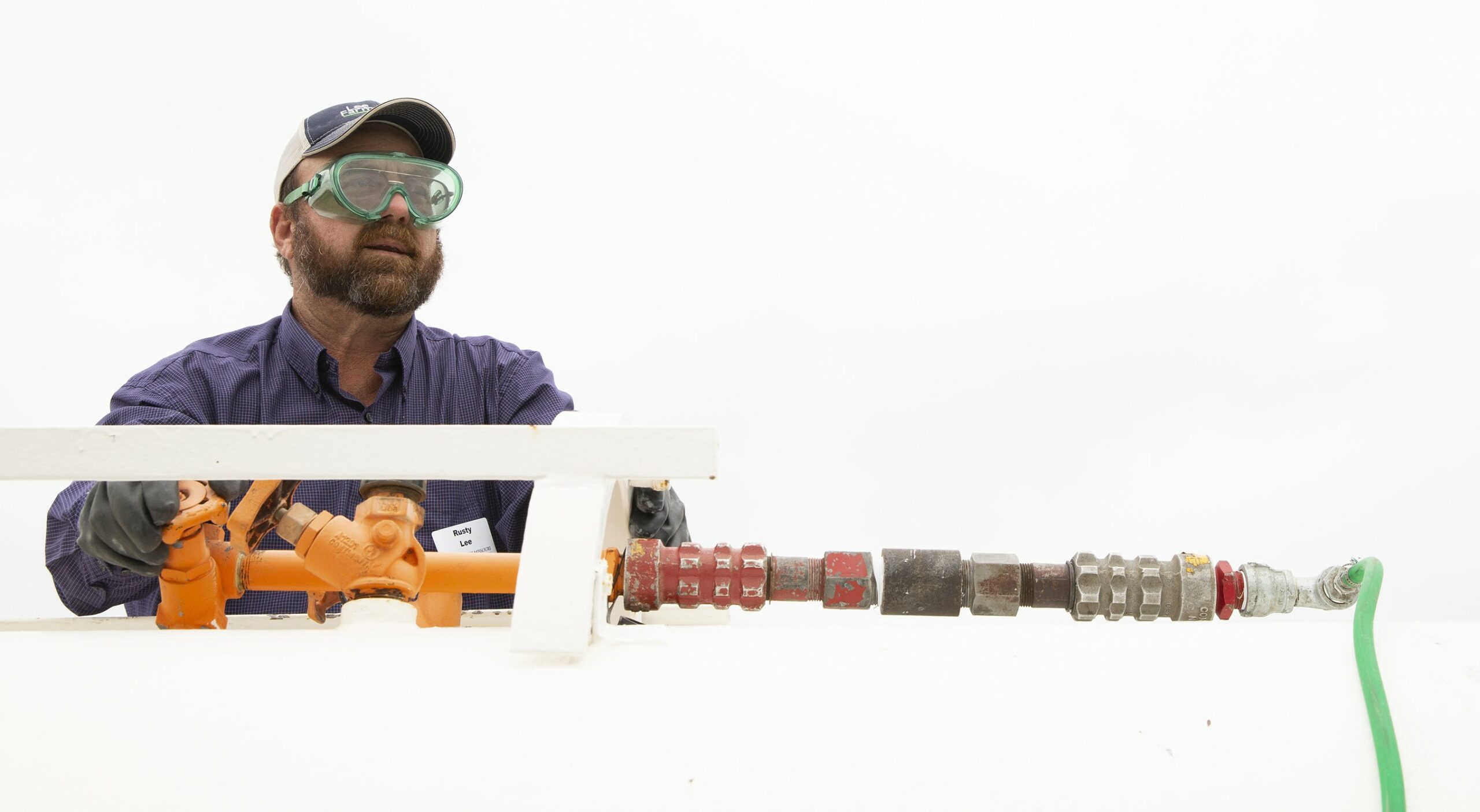Ammoniation stretches hay supplies during drought

COLUMBIA, Mo. — As hay supplies dwindle, University of Missouri Extension agronomist Rusty Lee is showing forage producers how to use a simple, inexpensive treatment to stretch feed supplies during drought.
Ammoniation boosts the nutritive value and digestibility of poor-quality hay, cornstalks, wheat straw and other feedstuffs that livestock producers turn to when hay is in short supply, Lee says. The process makes roughages more digestible for cows and horses.
Ammoniation takes one week to a month, depending on temperature: two to three weeks in summer (Lee recommends one week if the temperature is 85 F or higher) and up to four weeks in winter. Lee says three weeks is a good average.
Lee gives these steps:
- Stack round bales seven at a time – four bales side by side and three on top.
- Cover with heavy mil 100-foot plastic.
- Secure the edges of the plastic by covering with soil or waste lime. Tamp soil down to seal securely.
- Prefill your ammonia tank to the correct amount to avoid risk of overtreating. Lee suggests 60 pounds of anhydrous ammonia per ton of hay.
- Slowly add ammonia by cracking the valve on the anhydrous ammonia tank. Allow ammonia to trickle into the middle of the hay bales overnight. Wear proper safety equipment when working around ammonia.
- Air out bales three days before feeding to allow the ammonia to clear. Do not uncover in windy conditions. Air out before testing forage to check improvement.
Current anhydrous prices run about $960 per ton. This translates to $28.80 for the recommended 60 pound per ton rate. That’s $14.40 of anhydrous per 1,000-pound bale, says Lee.
In a press release, Lee said “By spending $14.40, plus some labor, we can improve the feed value of a $60 straw bale. It does not become the equivalent of good grass hay, but with good hay eclipsing $100 per bale, the $14.40 spent should make a positive return on investment.”
Only ammoniate poor-quality forages, Lee says. High-quality forages can become toxic after ammonia treatment and cause “crazy cow” syndrome when fed.
After ammoniating, uncover and air out for about three days. Then test forage quality using procedures described in the MU Extension publication “Missouri’s Ultimate Feed Alternative: Ammoniated Tall Fescue” at https://extension.missouri.edu/agw1003.
Ammoniation also can reduce toxicity from endophyte-infected forages. MU Extension state forage specialist Craig Roberts says MU studies show that ammoniated tall fescue is about five times less toxic than infected pastures.
Ammoniation can double the crude protein of low-quality forages and increase the total digestible nutrients by up to 20% (40% TDN before, 48% TDN after), says MU Extension beef nutritionist Eric Bailey.
Producers should consider herd nutritional needs when feeding ammoniated forages. “Energy will be limiting in diets built around ammoniated low-quality forages, especially for cows nursing calves,” Bailey says. “Ammoniated forage will meet the nutrient requirements of pregnant, nonlactating females, but any winter-calving cows with a calf or cows in the last trimester of gestation before calving will need additional energy supplement.”
This is part of an MU Extension series to help row crop and livestock producers manage drought. For more articles, go to https://mizzou.us/DroughtResources.
For more information, contact Lee at 573-564-3733 or leerw@missouri.edu. You may also contact your local MU Extension agronomist.
Miss Clipping Out Stories to Save for Later?
Click the Purchase Story button below to order a print of this story. We will print it for you on matte photo paper to keep forever.

